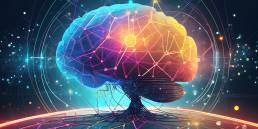Large Language Models (LLMs) like GPT-4 and LLama have transformed how we engage with technology, offering human-like interactions and insights. Yet there’s a burning question: Can they transcend their training and truly “think outside the box”? How can we exceed the confines of their training and fine-tuning limitations to offer even more relevant and useful responses?
Introducing Retrieval Augmented Generation.
In the ever-evolving world of AI, clinging to yesterday’s norms is equivalent to stagnation. Breakthroughs are happening every day, and one such breakthrough changing the narrative of AI and Machine Learning is Retrieval Augmented Generation (RAG). So, what’s the buzz about RAG? It’s an innovative approach that beautifully marries retrieval-based models (those good old librarians fetching information) with large language models. Imagine giving GPT-4 the world’s biggest library, including a library of information about your business, your customers, or your products and services. That’s what RAG does. It taps into a treasure trove of information without having to cram every single piece of knowledge directly into a neural model during training. This can help reduce the size of the model, as well as increase its speed and cost-efficiency.
Here’s how the magic unfolds:
- Evaluation: Upon receiving a query, we first check to see if the request might require more information than the LLM will have available in its current context and chat history.
- Retrieval: Akin to a seasoned librarian, RAG’s retrieval system searches for relevant data and includes it in the context for the response
- Inference: A large language model such as GPT or BERT crafts a response that’s an amalgamation of both the input and retrieved information.
The Perks:
- Scale: It becomes possible to tap into a vast ocean of information without increasing the size (and cost!) of the neural model.
- Relevance: Keeps your AI responses up to date and relevant, eliminating the “knowledge cutoff date” as you may be familiar with from using models such as ChatGPT.
- Precision: Expect pin-point detailed responses, thanks to the rich content of retrieved documents.
So how can this be applied to your business? RAG isn’t just a fancy technical term. It is a powerhouse technique that reshapes the way your business can empower your staff and customers. To start, let’s consider an advanced virtual customer support agent. Instead of the usual generic responses, yours can sift through FAQs, customer orders, documentation, or a knowledge base, serving up answers that are tailored and detailed to that specific scenario.
But this can also be applied to any virtual agent: legal advisories, e-commerce recommendations, content creation, financial analysis – you name it, retrieval-augmented generation can transform AI chatbots and large language models into astoundingly relevant and useful tools.
RAG isn’t just rewriting the AI playbook; it’s crafting a whole new one. As businesses continue to unlock its potential, staying ahead of the curve is paramount. Interested in harnessing the prowess of RAG for your business? Keaud has the expertise, the passion, and the vision to help pave the path forward together.
Related Posts
February 26, 2025
Claude 3.7 Sonnet: A Game-Changer for Software Development
AI-assisted development just got a…
November 3, 2024
Helping AI Code Smarter: Maximizing Efficiency with Vue and TypeScript
AI models are getting ever-better at…




